
James FitzJames Butler, 2nd Duke of Ormonde, (1665–1745) was an Irish statesman and soldier. He was the third of the Kilcash branch of the family to inherit the earldom of Ormond. Like his grandfather, the 1st Duke, he was raised as a Protestant, unlike his extended family who held to Roman Catholicism. He served in the campaign to put down the Monmouth Rebellion, in the Williamite War in Ireland, in the Nine Years' War and in the War of the Spanish Succession but was accused of treason and went into exile after the Jacobite rising of 1715.
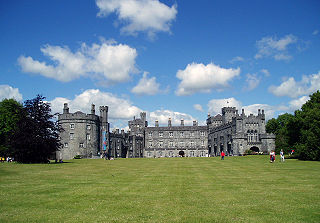
Kilkenny Castle is a castle in Kilkenny, Ireland built in 1195 to control a fording-point of the River Nore and the junction of several routeways. It was a symbol of Norman occupation and in its original thirteenth-century condition it would have formed an important element of the defences of the town with four large circular corner towers and a massive ditch, part of which can still be seen today on the Parade.
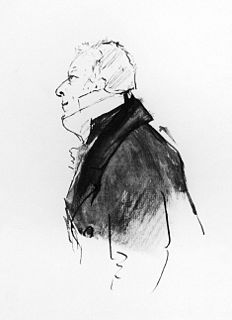
John William Ponsonby, 4th Earl of Bessborough, PC, known as Viscount Duncannon from 1793 to 1844, was a British Whig politician. He was notably Home Secretary in 1834 and served as Lord Lieutenant of Ireland between 1846 and 1847, the first years of the Great Famine.
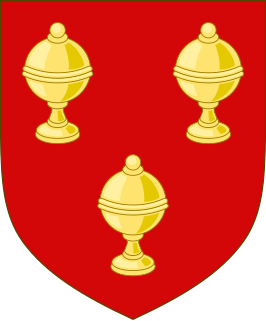
The peerage title Earl of Ormond and the related titles Duke of Ormonde and Marquess of Ormonde have a long and complex history. An earldom of Ormond has been created three times in the Peerage of Ireland.
This is a list of people who have served as Lord Lieutenant of County Tyrone.
Christopher Wandesford was an English administrator and politician who sat in the House of Commons between 1621 and 1629. He was Lord Deputy of Ireland in the last months of his life.
This is a list of people who have served as Lord Lieutenant of Carlow.
This is a list of people who have served as Lord-Lieutenant of Kildare.
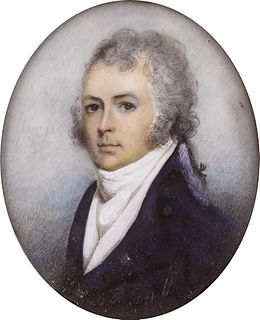
James Wandesford Butler, 1st Marquess of Ormonde, was an Irish nobleman and politician. He was the second son of John Butler, 17th Earl of Ormonde and Frances Susan Elizabeth Wandesford. He was born at Kilkenny castle on 15 July 1774.
John Butler, 17th Earl of Ormonde, 10th Earl of Ossory (1740–1795) was an Irish peer and Member of Parliament (MP). He represented Gowran between 1776 and 1783, and Kilkenny City between 1783 and 1792. In 1791, his right to the peerage was acknowledged in the Irish House of Lords.
Walter Butler (1703–1783), also known as Walter Butler of Kilcash, and Walter Butler of Garryricken, was the de jure16th Earl of Ormond and 9th Earl of Ossory. He did not assume these titles as he thought them forfeit as a result of the attainder of the 2nd Duke of Ormonde. In the peerage of Ireland, the titles were successfully claimed in 1791 by his son John, the 17th Earl.
Viscount Castlecomer was a title created on 15 March 1707, along with the title Baron Wandesford, for Christopher Wandesford, 1st Viscount Castlecomer, whose father, Sir Christopher Wandesford, had been created Baronet of Kirklington, North Yorkshire on 5 August 1662 in the Baronetage of England. The 5th Viscount was created Earl Wandesford on 15 August 1758. All three titles and the baronetcy became extinct on his death in 1784.
John George Brabazon Ponsonby, 5th Earl of Bessborough PC, styled Viscount Duncannon from 1844 until 1847, was a British cricketer, courtier and Liberal politician.
Gentleman of the Bedchamber was a title in the royal household of the Kingdom of England from the 11th century, later used also in the Kingdom of Great Britain.
The High Sheriff of County Kilkenny was the British Crown's judicial representative in County Kilkenny, Ireland from the 16th century until 1922, when the office was abolished in the new Free State and replaced by the office of Kilkenny County Sheriff. The sheriff had judicial, electoral, ceremonial and administrative functions and executed High Court Writs. In 1908, an Order in Council made the Lord-Lieutenant the Sovereign's prime representative in a county and reduced the High Sheriff's precedence. However the sheriff retained his responsibilities for the preservation of law and order in the county. The usual procedure for appointing the sheriff from 1660 onwards was that three persons were nominated at the beginning of each year from the county and the Lord Lieutenant then appointed his choice as High Sheriff for the remainder of the year. Often the other nominees were appointed as under-sheriffs. Sometimes a sheriff did not fulfil his entire term through death or other event and another sheriff was then appointed for the remainder of the year. The dates given hereunder are the dates of appointment. All addresses are in County Kilkenny unless stated otherwise.
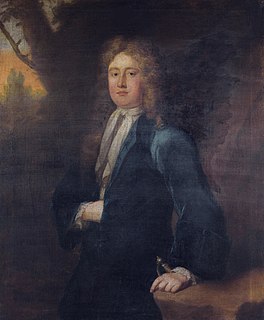
Christopher Wandesford, 2nd Viscount Castlecomer was an Irish politician who sat in the Parliament of Ireland in 1707 and in the British House of Commons between 1710 and 1719.
The Custos Rotulorum of County Kilkenny was the highest civil officer in County Kilkenny.





